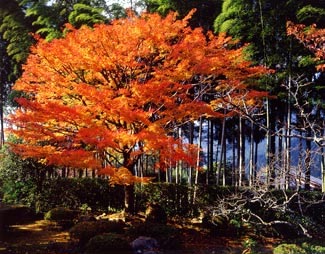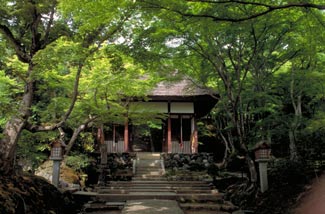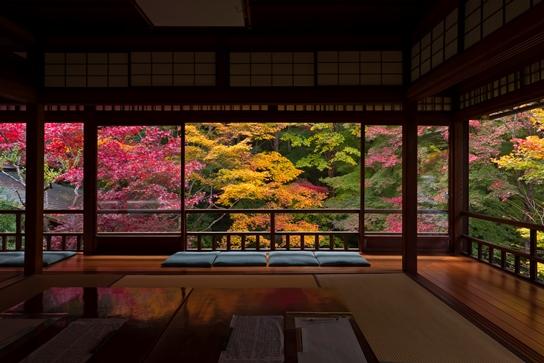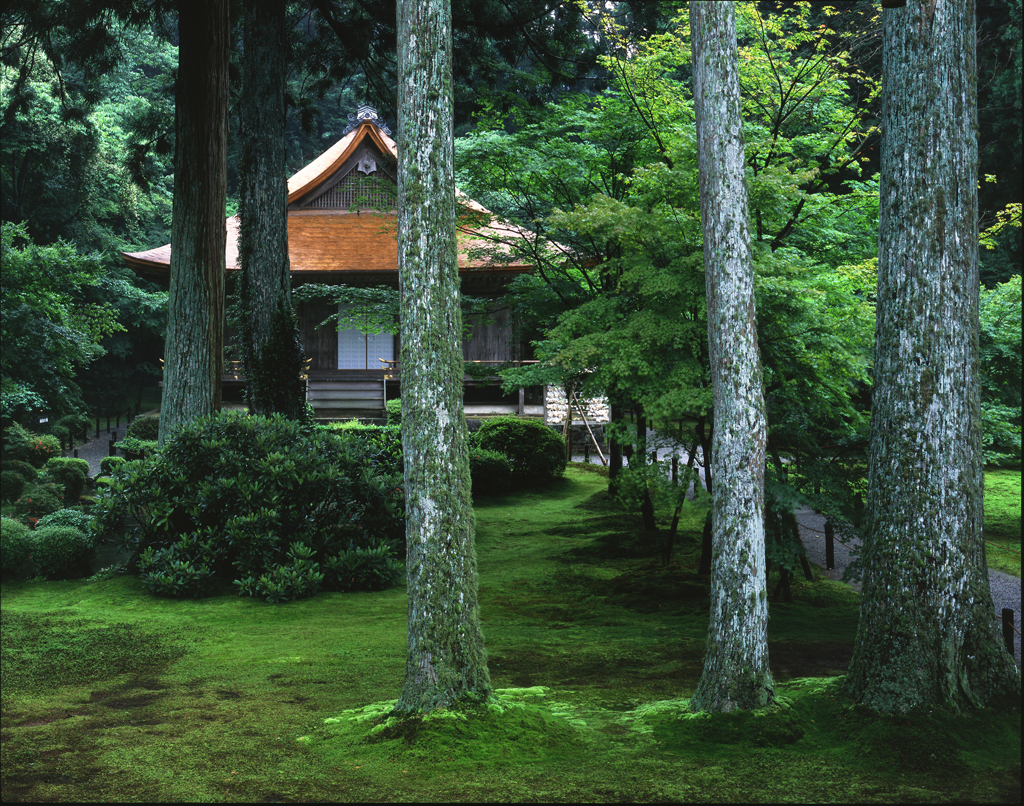
Hosen-in Temple’s garden is its chief delight. Its trimmed shrubs, flowering trees, and moss-covered rocks stand before a bamboo grove that admits a few glimpses of mountains in the background. The highlight of the garden is a 700-year-old pine tree, whose aged branches are held up with the help of wooden supports. Visitors are able to sip green tea (free with admission) while contemplating the garden from the main hall.
Hosen-in Temple was built in the Heian Period as a pilgrims’ lodging by the head priest of Shorin-in Temple. It was the site of a famous debate featuring the priest Honen, founder of the Jodo sect of Pure Land Buddhism. It is also a temple (like Genko-an and Shoden-ji) which features blood-smeared ceilings and floorboards that were originally part of Fushimi Castle, site of a mass suicide of defeated soldiers. The ceilings and floorboards were relocated to temples as a way of memorializing those who gave their lives. This grim reminder of the past forms a stark contrast to the serene atmosphere of the garden.
Basic Information
- Address : 187, Ohara-Shorin-in-cho, Sakyo-ku, Kyoto
- Website : Click here (Japanese)








